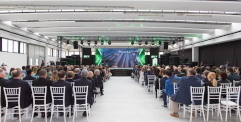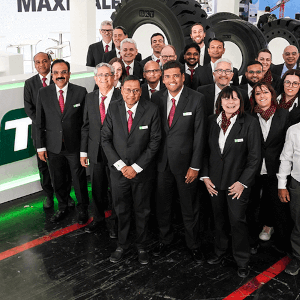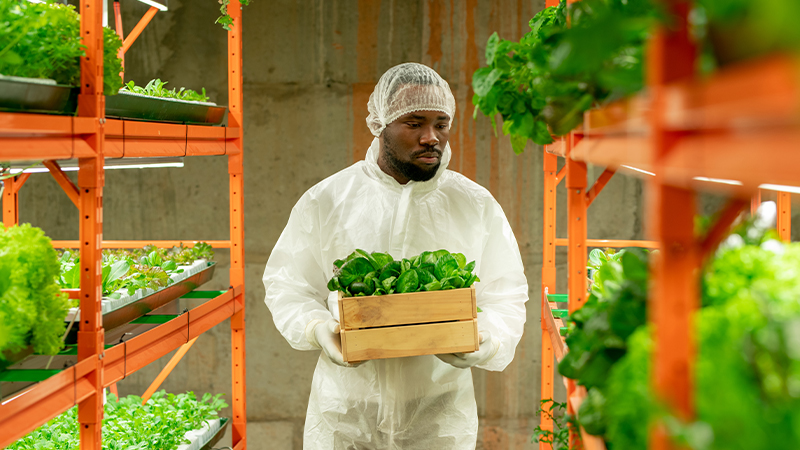Brilliant minds are developing encouraging new technological advances that could guide us through the process of sustainably feeding the world. One solution to the said problem could be vertical farms, also known as indoor farming.
Unfortunately, it isn’t news that the world is facing more challenges than ever before: from political unrest, sustainability, and feeding the ever-rising global population. Did you know that the United Nations predicts the global population will reach almost 10 billion by 2050? That is a lot of mouths to feed. How are we meant to meet 2050 net zero goals with such a drastic increase? Cities and towns are expanding; more land will be needed for intensive farming, which already is putting a strain on natural resources and soil health.
But it is not all doom and gloom.
Brilliant minds are developing, encouraging new technological advances that could guide us through the process of sustainably feeding the world. One solution to the said problem could be vertical farms, also known as indoor farming.
What is Vertical Farming?
First things first, what even is vertical farming? And how does it work? Vertical farming is a relatively new technique that grows plants indoors rather than out on land like traditional farming, often stacked in layers like futuristic bookshelves in warehouses - but with plants and crops instead. Vertical Farms can also be produced through structures like skyscrapers or even underground; some people have even created a DIY vertical farm for their back garden like a modernised greenhouse.
The purpose of vertical farming is to create a controlled environment. It makes use of artificial light with the energy efficiency LED's (light-emitting diode) instead of the sun, and they can control temperature, humidity, soil, nutrients and more—the controlled environment allows for the optimisation of conditions making the perfect environment for plants to flourish.
Benefits of Vertical Farming
What are the benefits? Since the origins of the agricultural revolution, which is considered the cause of how we prospered and evolved into the society we are today, our population has multiplied. Our population was minuscule back then, compared to today, and had little impact on the environment. The high land mass needed for farming in modern times - and the future - is not currently sustainable in the long term, and needs change. And change is happening.
Vertical farming aims to be significantly more efficient and sustainable. Being closer to dense cities reduces the need for transportation by a considerable amount. This could enable a longer shelf life if the days are not wasted being stuck in the back of the truck. Many more crops can be harvested with a smaller space, making much better use of the surface area that even intensive farming cannot compete with. Plenty claim that they can condense 700 acres worth of farmland to the size of a big box retail store.
Water usage in vertical farms is also a lot more efficient. They use smart controlled systems ensuring that the necessary specific amount is used. Moreover, the company Plenty boasts that they save roughly a million gallons of water per week due to their systems in place.
They collect the evaporated water that would be otherwise lost on a traditional farm, and store it to be used multiple times when needed.
The benefit of being indoors and in a controlled, optimised environment means it is safe from the challenges of the weather. Globally, farmers depend on the regular, predictable seasons to grow crops. But with the change in climate and more extreme weather conditions, it is an increasing challenge to meet yield goals. The internal environment is controlled and optimised, allowing for greater yields more regularly. Traditional farming allows for two harvests a year with the current weather and seasons. Vertical farming not being reliant means they can produce fresh food or plants year-round. Nordic Harvest, Europe's largest vertical farm, makes an impressive claim that they can harvest every 2 - 3 weeks from seed to fully flourished, due to their crops being able to grow in the perfect conditions.
The plant itself is also much cleaner. Being inside ensures no pests, as well as harmful bacteria and controlled disease management, meaning no pesticide is needed. Nutrients added in the controlled environment eliminate damage to soil and water ecosystems.
Vertical farming could also prevent the need for deforestation practices to allow room for farmland. Could this also mean that land not suitable for farmland can be used, such as dry, barren soil and desert lands?
Limitations and Drawbacks
Vertical farming is still in its very early stages, so the costs are too high for some. The initial start-up installation costs are significant - and having to pay for artificial light? The sun is free, for starters. For some, vertical farming is just out of reach… for now. Unfortunately, for significant change to happen, even if for the better, it needs to be economical and profitable, or there is very little motivation for corporate giants to change their mindset.
In addition, the energy needed to power these farms could arguably counteract the sustainability benefits, if they still rely on fossil fuels to be powered. That said, LEDs have become a lot more affordable and energy-efficient. Plus, if governments continue to strive to leave fossil fuels behind, these farms could be powered by other means such as solar energy. For example, sustainability is critical for Nordic Harvest. Their whole production process is purely wind energy, thus eliminating the need for fossil fuels.
The Future of Vertical Farming
Ultimately, this gives us hope and suggests that vertical farms can be 100% sustainable and economical. More so than ever before, corporations are listening and adapting to meet the consumer's needs. More and more consumers are demanding sustainability and accountable corporations, so it is in their best interests to listen to maintain current customers and acquire new ones. Contrary to the cost factor, some would argue that the multiple harvests, increase in yields, and better use of space could mean that, in the long run, vertical farms will turn out to be more cost-effective.
There is concern surrounding some cultures and smaller farms that are not so affluent, particularly in more developing countries. What will happen to them if we no longer need imports from countries with hotter climates and rely heavily on farming and exports?
The future is exciting, and we are watching closely. To keep up with all the exciting
developments in farming and BKT related. Visit our website or connect with us here.






